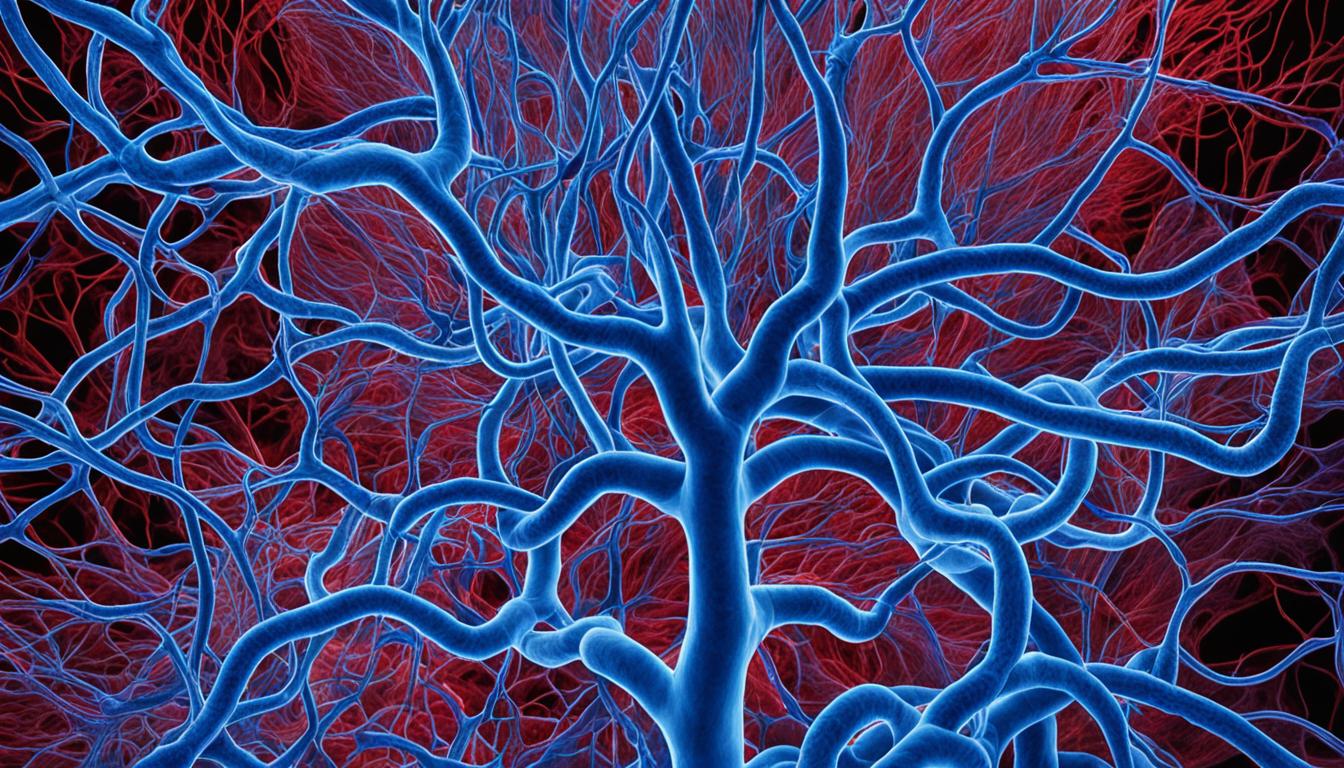A brain arteriovenous malformation (AVM) is a problem in the brain’s blood vessels. It causes a tangle that messes up how blood flows in the brain. This can be very serious for your health.
Most AVM problems in the brain are there from birth. But, some might start showing up later. There’s even a chance you could get it from your family. Knowing about the symptoms, causes, and how it’s found is key to treating it well.
You might feel headaches, have seizures, or lose strength in your muscles if you have a brain AVM. It can also make you feel numb, see less, speak poorly, walk funny, or be confused. These issues deeply affect how you live and need quick medical care.
To find a brain AVM, doctors use special brain scans like CT or MRI. They might also look inside your brain with a cerebral angiogram. These tests help see the weird blood vessels in detail, showing doctors where and how big the AVM is.
Preventing bad events like brain damage is the main goal when treating brain AVMs. Stem cell therapy is a new treatment that looks very promising. Stem cells help fix the brain by growing new cells, which could make the brain work better.
Key Takeaways:
- Brain arteriovenous malformation (AVM) messes with blood flow in the brain because of a tangle in the vessels.
- Most AVMs start at birth but can happen later. There might be a family link to getting AVMs.
- Signs of a brain AVM include headaches, seizures, weak muscles, body numbness, poor eyesight, speech problems, confusion, and trouble moving.
- Finding a brain AVM needs brain tests like CT, MRI, and cerebral angiograms to look closely at the blood vessels.
- Treatments aim to stop bad outcomes like brain harm or stroke. Stem cell therapy is a hopeful new option for fixing the brain.
Symptoms and Diagnosis of Brain Arteriovenous Malformation
A brain arteriovenous malformation (AVM) can cause a variety of symptoms. This depends on where in the brain it is. The common signs are:
- Seizures
- Headaches
- Pain in the head
- Muscle weakness or numbness in a specific part of the body
- Visual problems
- Speech difficulties
- Problems with movement
- Dizziness
- Cognitive difficulties
- Loss of consciousness
These symptoms may show up alone or together. It’s vital to recognize and act on these signs quickly.
Various tests help diagnose a brain AVM. These include:
- Computed Tomography (CT) scan
- Magnetic Resonance Imaging (MRI) scan
- Cerebral Angiogram
These tests show the abnormal blood vessels and help with treatment choices. Accurate diagnosis is key for treating brain AVMs well.
Causes and Risk Factors of Brain Arteriovenous Malformation
The exact causes of brain arteriovenous malformations (AVMs) are not fully understood. Most AVMs seem to be present at birth and grow during fetal development. But, they can also appear later in life alongside their congenital nature.
Scientists believe there might be a link to genes. This is because AVMs sometimes occur in families, pointing to a possible hereditary connection. If someone in your family has had AVMs or deals with HHT, a rare blood vessel disorder, your risk increases.
Being male appears to be a significant risk factor for developing brain AVMs. Studies indicate a higher likelihood for AVMs in males compared to females. Also, if there’s a family history of AVMs or HHT, your chances of getting an AVM go up.
While much remains to be clarified, knowing these details is crucial. Understanding causes and risk factors could help us identify and support those most at risk of this vascular issue.
Common Causes of AVM:
- Most brain AVMs are present at birth and develop during fetal growth.
- Some brain AVMs can form later in life, although they are primarily congenital.
Risk Factors for Brain AVM:
- Being male increases the risk of developing a brain AVM.
- Having a family history of AVMs or hereditary hemorrhagic telangiectasia (HHT) is a significant risk factor for brain AVMs.
Treatment Options and Complications of Brain Arteriovenous Malformation
The treatment for a brain arteriovenous malformation (AVM) depends on size, place, and symptoms. Doctors have different options for dealing with AVMs.
Observation is used for small AVMs with no big symptoms. Doctors watch them but act only if they cause new problems.
Medicines might be given to help with specific symptoms like seizures or headaches.
If things are more complicated, surgery to remove the AVM could be the answer.
Embolization is another choice. A catheter is used to reduce blood flow to the AVM. This helps avoid a brain hemorrhage.
Stereotactic radiosurgery uses focused radiation to treat the AVM without surgery. This is for tough-to-reach AVMs.
AVMs bring risks like brain bleeds, which can be very dangerous. Smaller bleeds can also cause lasting harm if they happen a lot. They may also affect brain parts controlling thoughts and movement.
This condition can change how the brain works and life quality, especially in kids. They might need special care because of these effects.

